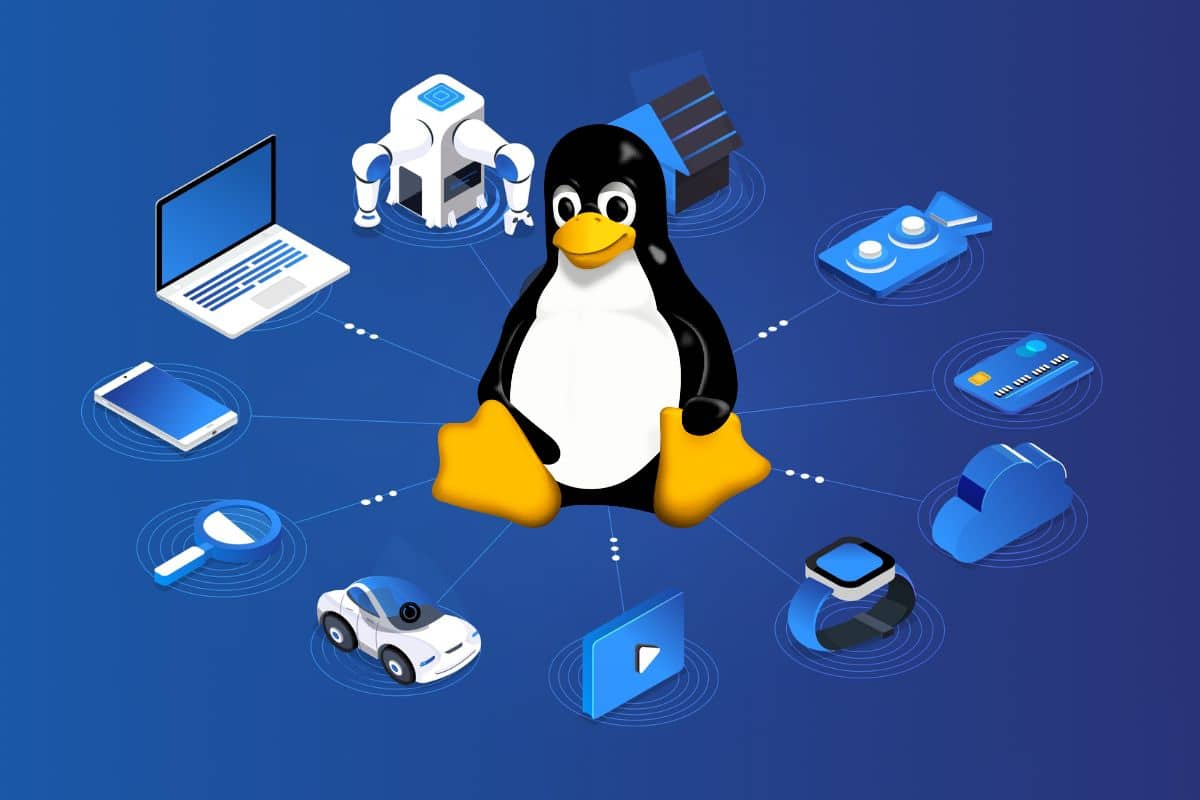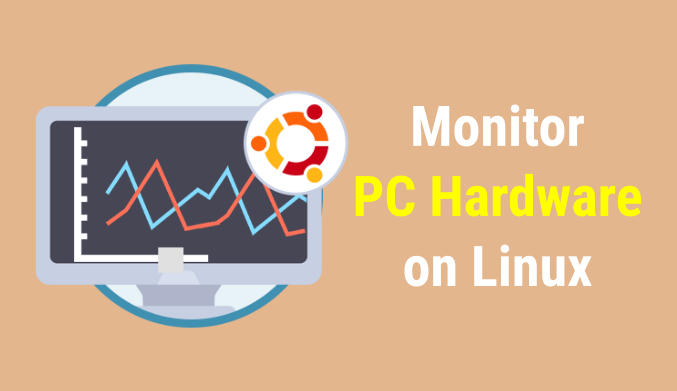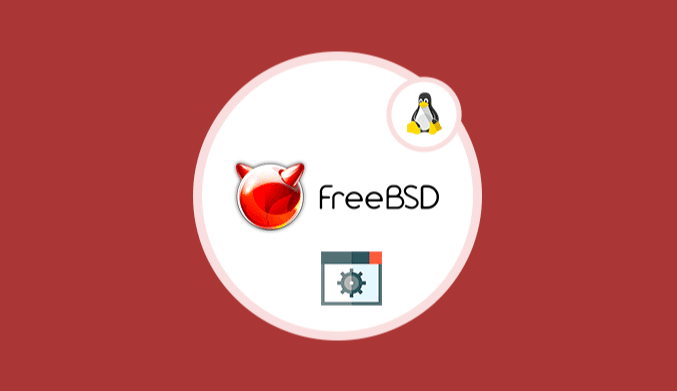10 Best Linux Distros for IoT Devices: Our Picks
Are you looking for a Linux-based operating system for IoT? In this article, we have come up with the top 10 Linux distros for any IoT application and product development.
- Ubuntu Core — Overall Best Linux Distro for IoT Devices
- Raspberry Pi OS — Best Debian-Based OS for IoT
- Tizen — Best Linux for IoT with Flexible Operating System
- Zephyr — Popular Among IoT Developers
- TorizonCore — Best Easy-to-Use Linux OS for IoT
Best Linux Distros for IoT
Linux as compared to other operating systems has grown to have a solid root in the world of technology today. Ever since its launch in 1991, its compatibility with devices has been fully-fledged to a versatile OS. It runs on desktops, PCs, servers, mainframe computers, cloud base devices, supercomputers, and precisely IoT. This suitability with devices does not set boundaries for either old or advanced systems, small or large. The features make it more flexible, hence, why running it for IoT will be perfect.
Now, what is this IoT? IoT simply means the Internet of Things. It constitutes physical objects and other types of technology with software, sensor, and hardware that connect, communicates, and exchange data with other devices over a network. The primary architectures of IoT that do result in the creation of IoT applications have aided smooth functionality. However, since IoT requires embedded lightweight OS with microprocessor architectures, Linux becomes the best choice.
What Makes Linux Good for IoT
Linux is known to be a top operating system with excellent security. This perception is due to its stability, scalability, flexibility, and most of all its open-source nature. Performance-wise, it’s completely reliable and efficient. Standing out on a tough task is another take-home; hence, it is a powerful OS for IoT. Knowing connectivity is a priority in developing IoT devices, Linux makes it easier to benefit from networks or wireless connections. In terms of how to secure IoT can be, Linux is a plus to it because security is a big deal in IoT.
Linux offers security confidence for IoT application packages and the inbuilt kernel attribute also promotes security. Developers prefer it for embedded system development because they realize it is superior to others. low-cost, customization and accessibility are as well some reasons why Linux is best for IoT. Essentially, Linux is beginner friendly and with popularity very impressive, finding a developer or a professional who can use the OS perfectly is often not a challenge. What an IoT developer stands to gain is that whenever issues arise amidst development, finding an experience helping hand will not be an issue.
Best Linux Distros for IoT
Based on the different types of IoT devices, there are several Linux operating systems for IoT. In this article, we would outline and describe the top 10 of them with their pros and cons, as well as their minimum system requirements. Let’s see what they are.
Ubuntu Core — Overall Best Linux Distro for IoT Devices
- Min. Processor: 500MHz single-core processor
- Min. RAM: 384MB system memory
- Min. Storage: 512MB of free hard drive space
Ubuntu Core is a Linux distribution based on Ubuntu for IoT and embedded environments. It is developed to meet the requirement of IoT devices. Ubuntu Core is seen to be highly prioritized when it comes to security because it is perceived as the most secure. It answers and boosts the dependency of developers’ expectations towards Ubuntu. What’s more is that knowing Canonical is the support system of Ubuntu, their team is behind the creation of Ubuntu core.
They built this from snap which is self-dependent and has compatibility with several OS, thus, why is the best fit for IoT. This Core version of Ubuntu is preferred by developers because since it has the support of Canonical, it helps teams of any size build simple and cost-effective embedded devices in no time. Unlike others, this distro has up to 10 years of support from its developer. Though IoT infrastructure is not mostly built from scratch while using Ubuntu Core, every device comes with its hosted IoT app store.
Pros & Cons of Ubuntu Core
Pros:
- Loved by developer
- Reduce the cost of Linux for IoT
- Has the solid backing of the developer’s community
- Ubuntu Core updates itself automatically
- It’s self-dependent and has compatibility with the different operating system
- Ubuntu Core encourages you to continue to improve software devices while in use
Cons:
- Updates are transactional. Either 100% successful or they are not installed at all.
- No graphical user‘s interface (GUI)
Raspberry Pi OS — Best Debian-Based OS for IoT
- Min. Processor: 1.5GHz quad-core 64-bit processor
- Min. RAM: 1GB system memory
- Min. Storage: 8GB of free hard drive space
Raspberry Pi OS is a low-cost, powerful, and production-ready Debian-based Linux for IoT. It has the technology to deploy tens and thousands of IoT applications in several industries across the world. By performance, Raspberry can bring what it takes to stand in your application, right from microcontrollers to ARM-based computers. Sustainability and affordability are key to aiding every IoT device.
Raspberry is versatile and this feature makes it perfect for IoT projects. Autonomous systems and also face recognition robots can easily be created. This is because it allows you the strength of cutting-edge technology to help handle some routine tasks efficiently. The biggest strength of Raspberry is its versatility which makes garnering your way around it as a developer looks more interesting.
It is obvious that IoT is an emerging technology, thus, with the Raspberry GPIN connecting to several sensors, different IoT projects can be developed. This can include, smart home appliances, face recognition applications for door locks, crow size estimation tools, attendance authentication devices, smart home appliances, and more.
Pros & Cons of Raspberry Pi OS
Pros:
- It has diverse features
- It is very affordable
- Consumes less power
- It is beginner friendly and easy to use
- Best for smaller IoT projects
Cons:
- Raspberry has a slower processing speed compared to the standard desktop
- Limited in functionalities
- Not suitable for a larger task
Yocto Project — Best Linux-Based OS for Creating IoT Devices
- Min. Processor: 4GHz quad-core processor
- Min. RAM: 8GB system memory
- Min. Storage: 50GB of free disk space
Yocto isn’t an embedded distribution. But it is an open-source that team up to help developers create a custom Linux-base distribution for IoT devices irrespective of the hardware architecture. It is used worldwide by developers of different system development and the advantages have been of highly valued project. It has good management benefits coupled with its customization capacity. Unlike Raspberry Pi which is quite slow in processing speed, Yocto is developed for speed, footprint, and memory utilization. The project carried out with this OS is adopted in the top IoT industry.
Known to be compatible with any project architecture, it supports Intel, ARM, MIPS, AMD, and PPC amongst others. Since it’s open-source, you have the privilege to explore any supplier without being locked down. What’s more interesting about Yocto is that it is designed for you to add what you desired or packages needed without having to remove or adjust any default distribution. Hence, it is best for creating IoT devices.
Pros & Cons of Yocto Project
Pros:
- It is customizable and give room for you to add packages needed
- It has a great and productive community that collaborates effectively
- It is built for constrained IoT devices.
- The layers of infrastructures in Yocto are an integral part of its project model
- Yocto project allows you to build and rebuilt packages as you want.
- It allows you to test image components for easier debugging
- It has tutorials to make things pretty achievable during rough times
Cons:
- Yocto does have a steep learning curve. Meaning that it can be difficult to know how to proceed along the line.
- You have to be an experienced developer to find your around Yocto
- It is not beginner friendly in any way
OpenWrt — Best for Wireless Routers
- Min. Processor: 1GHz processor
- Min. RAM: 64MB system memory
- Min. Storage: 8MB of free hard drive space
If you are looking for an extensible Linux distro for IoT devices, then OpenWrt is the best choice for you. In comparison with others, it is based on wireless routers. It is developed with full-fledged attributes suitable and modifiable for embedded or IoT devices. This is done to enable you to have all the features powered by a modern Linux kernel. What you would come to like with OpenWrt is that all features are well-arranged enabling a fully writable filesystem to provide optional management for any package.
This is good because it saves you time and resources from creating single firmware. This in turn boosts performance and stability. However, all this is put forward for a certain aim of avoiding restrictions when it comes to using packages that will help you customize the IoT devices. Keep in mind that OpenWrt is provided at zero cost. The entire development has been created by a team of volunteers, developers and maintainers, individuals and components alike.
Pros & Cons of OpenWrt
Pros:
- Focused on networking gear precisely routers
- Updates are based on packages
- Strong community support
- It is open-source, and no cost is involved
- OpenWrt installation is secured by default
- Up-to-date software components
Cons:
- It is more suitable and effective on routers than laptops and other devices.
- Most routers are not compatible with OpenWrt open-source firmware
- It is challenging sometimes to find a router that works with OpenWrt
Buildroot — Best Linux for IoT with Similarities to Yocto
- Min. Processor: 1GHz processor
- Min. RAM: 4GB system memory
- Min. Storage: 8GB of free hard drive space
Buildroot is a simple, easy-to-use, and effective tool for generating embedded Linux base systems via a cross-compilation toolchain. It is very flexible and can withstand anything architecture. As a developer interested in IoT development, this is not a Linux base OS to shut off. All thanks to the kernel menuconfig, gconfig, and xconfig. In terms of configuration for building a Buildroot system, it doesn’t take time, within 15-30 minutes you are good to go.
It has support for several packages ranging from Gstrearmer, Webkit, Gtk3, Kodi, and more. Likened to Yocto, Buildroot is as well an open-source project. And quite encouraging numbers of developers underwrite it daily. Contributing to the resources on Buildroot is not challenging as it is for everyone. The support is extending to a large number of network-related and system-related utilities.
Pros & Cons of Buldroot
Pros:
- It is for everyone and has a simple structure that makes it easy to understand and extend.
- It has limited configuration settings
- Requires full image rebuilt. If a board has no support, you can easily add one
- It relies on the Makefile language which makes creating an IoT Linux distro from open-source code easier.
- Adding packages is very easy in Buildroot
Cons:
- Customization can be a hassle because Buildroot is too minimalist
- Unlike Yocto which is a full project of multiple layers and tools, Buildroot is built around simplicity which makes it require rebuilding sometimes.
Tizen — Best Linux for IoT with Flexible Operating System
- Min. Processor: 1GHz Cortex-M/R processors with MPU
- Min. RAM: 2MB system memory
- Min. Storage: 16MB of free hard drive space
Another good one on the list is Tizen. This Linux-based IoT has been in existence since 2012. Tizen is a flexible OS built from scratch to help with the need for mobile and other connected device ecosystems. It allows the creation of solid IoT applications and executes them on a full spectrum of devices. The connection is not limited. As such, the application developed can go with mobile, wearable devices, and even Tv. Looking at its embedded devices, unlike others on the list, it majorly revolves around Samsung production.
This is interesting to know the reliable and trustworthy grounds Samsung has built over time. The applications ecosystem has been expanded with the new Z3 after Samsung Z1. Most of these mobile brand IoT applications have been developed and built in Tizen. Aside from that, you can get tech tips and grow your Tizen application knowledge from here. Code sharing is viable as well as suitable forums where your questions can be answered. This among other fine attributes is why Tizen is the most flexible Linux base for IoT.
Pros & Cons of Tizen
Pros:
- It is best for mobile, wearable, and tv application
- It revolves hugely around Samsung gadgets
- Tizen is the most flexible IoT Linux base operating system for building mobile applications.
- Compared to others, Tizen is faster. It has a 64-bit processor.
Cons:
- Since it has a big share of development on mobile IoT applications, it requires lots of customization.
- Tizen is not beginner friendly, so it requires the right knowledge of the OS
- It can be pretty difficult for non-tech-savvy
Zephyr — Popular Among IoT Developers
- Min. Processor: 1GHz 64-Bit quad-core ARM processor
- Min. RAM: 512KB system memory
- Min. Storage: 1GB of free hard drive space
Zephyr is Real Time Operating System (RTOS) by developers and for developers. They have lots of diverse boards that enable developers and manufacturers multiple options to cater to their embedded RTOS difficulties. As such, what they have in support is over 450 boards. What’s more, is that if you desire to use this Linux base OS and your board is not presently supported, you can add support for a new board. It’s very simple to do that. Zephyr is a full-featured OS having an architecture that allows developers to focus on the application.
It is highly secured, and since, it’s for developers, in-depth security is employed and can easily be validated. Unlike others, it is lightweight both in functionalities and development models. It has long-term security updates support (LTS). What developers love about it is the fact that it can run on systems as small as 8kb of memory. Although, it can take up a system with both megabytes and gigabytes of memory size. In terms of connectivity, it supports standards like IPv4, IPv6, Bluetooth, Wi-Fi, CoAP, Ethernet, USB, Thread, and more.
Pros & Cons of Zephyr
Pros:
- Highly configurable and modular
- It supported more than 450 board
- There is the flexibility of adding a new board if what you use is not present
- Security is top-notch and validated
- It has long-time security updates.
Cons:
- Cannot be customized
- It is by the developer and for the developer only.
TorizonCore — Best Easy-to-Use Linux OS for IoT
- Min. Processor: X86-64
- Min. RAM: 4GB system memory
- Min. Storage: 512MB of free hard drive space
TorizonCore is a Linux OS platform develop to require high reliability, thereby allowing you to focus on your application and not on building and repairing the OS. It is an easy-to-use Linux for IoT because it simplifies the development of embedded Linux software. It is often fast and ready-to-use distribution, so no need for any redistribution. No need for lock-in as it is open-source. In terms of security updates, unlike Zephyr which is LTS, TorizonCore has both frequent and long-time updates.
Also, an offline update is possible with the use of a USB stick. It comes with real-time optimization. TorizonCore offer ready-to-use integration with visual studio code. The IDE extension for the visual studio and visual studio code will aid in the building of embedded and IoT products. What to note is that TorizonCore is built with the Yocto Project based on the Toradex Embedded Linux BSP, which will see you through further customization. It is a simplified application development tool for IoT.
Pros & Cons of TorizonCore
Pros:
- TorizonCore participates in many open-source communities and also contributes and serves as maintenance of most open-source projects.
- It uses Docker software containers, which will make it easy to add other functionalities of your choice.
- It is secure and reliable. So, it provides application updates and security patches in many use cases.
- It simplifies the maintenance of your devices
Cons:
- TorizonCore is founded by Toradex. Most users mistake their functionalities sometimes.
- It is built based on only Linux Operating System
FreeRTOS — Best Linux Distro for Microcontrollers and Microprocessors
- Min. Processor: 25MHz processing speed
- Min. RAM: 64KB system memory
- Min. Storage: 128KB of free hard drive space
FreeRTOS is a market-leading real-time operating system for small functionalities chips. It is developed in partnership with the world’s fortune 500 companies for over a decade. Being distributed freely under the MIT license, FreeRTOS has grown in IoT libraries across all segments and sectors. The primary goal is to be reliable and easy to use. Its kernel is trusted by world-leading companies as the de facto standard for microprocessors and microcontrollers, hence, why is the best in this aspect. In terms of installation, it has detailed pre-configured demos and an IoT guide to foster quick download and compilation.
Knowing it is suitable for microprocessors, the kernel is power-saving and scalable. Compared to others on this list, it is one of its kind we would say. By architecture compatibility, it supports more than 40 architecture and over 15 toolchains which include RISC-V and ARMv8-M microcontrollers. These controllers are said to be the latest releases. Additionally, FreeRTOS can be all-purpose driven once it is under an MIT license.
Pros & Cons of FreeRTOS
Pros:
- It has broad ecosystem support
- It is a real-time OS for microcontrollers and microprocessors
- Presence of modular libraries
- It downloaded every 170 seconds
Cons:
- They are designed to perform only a few tasks.
- Knowing they are microprocessors they are designed to run on small microcontrollers.
- FreeRTOS is not recommended for systems that call for multitasking
Mbed OS — Best Linux OS for Open-Source IoT
- Min. Processor: 1GHz
- Min. RAM: 1GB system memory
- Min. Storage: 512KB of free hard drive space
Mbed OS just like TorizonCore is an open-source, easy to use Linux base OS for the Internet of Things (IoT). The OS is down more on what will be needed in developing any connected product that will be based on an Arm Cortex-M microcontroller. This microcontroller can be storage connectivity, RTOS, sensors, security, and device management amongst others. IoT devices are protected via their multilayer security domain. With that said, developers can prototype IoT applications swiftly on low-cost development boards. And with simple drag and drop, the prototype will be built. Taking a walk on its toolchain and IDE support, Mbed OS has a studio that can debug on the three major operating systems (Linux, Mac, and windows). Though, Linux is the major and primary desktop IDE for Mbed OS. Compared to other open-source, Mbed OS can be used for both commercial and personal embedded and IoT projects without hassle. This is possible because it is released under an Apache 2.0 license.
Pros & Cons of Mbed OS
Pros:
- Ease of use enables multiple programs to be created in a single project.
- Mbed OS has an excellent community that allows contribution and collaboration.
- Security is tackled in both hardware, software, and communication as well as in the device makeup.
- Availability of a wide range of connectivity options
- IDE support
Cons:
- Some of the Mbed OS libraries are not completely optimized.
- Can’t explore all the hardware features
FAQs
Q. Is Linux Good for IoT?
Linux is not just good for IoT, Linux is best for IoT. So, to answer your question, yes, Linux is good for IoT. There are three main types of the operating system largely known and use. But among these three, Linux is the OS that is majorly open-source and also enables embedded distributions to be created. Projects such as the Internet of Things don’t often need larger distribution because what they are after is quite specific and cut across different sectors. This is because the devices will be in connection to one another, so it need too much bandwidth and memory space.
Q. Which Linux is Best for IoT?
Embedded Linux is often best for IoT. This is because of its low-cost, open-source code, and lightweight among other requirements. Linux is very stable, and as a developer trying to build an application or some customized tool, you need an operating system that can run fewer resources at a time or one at a time. However, described above are the list of the top ten Linux base IoT best for any IoT creation and development. Don’t hesitate to take a step on anyone as they have been proven to work well with good credibility.
Q. Why Do IoT Developers Prefer Linux
Several criteria and factors made Linux stand out among other OS. It is deliberately preferred because it is highly scalable, reliable, and secured to mention a few. Above all that, it is open-source and does not crash or experience downtime. And also have larger distribution to cater to any target. Just as said, IoT is based on an embedded system, and not all operating system has this or can create one. But Linux has embedded systems suitable for IoT. And if it doesn’t you can create a custom one within its distros.
Conclusion
Linus distribution is a sure pick in many uses case, and IoT is not an exception. IoT is not a device that consumes too many resources, but compatibility is key because they run on embedded systems. Though Linux distros have been great distribution for IoT, not all would work well in developing IoT applications or products. Therefore, in this article, we have taken time to research and described the best-standing ten Linux for IoT. This is not an exhaustive list as they are more. But these are the best that have been set on test-run and passed. So, if you are looking for a Linux based OS for IoT. Here you have them, the choice is yours.







